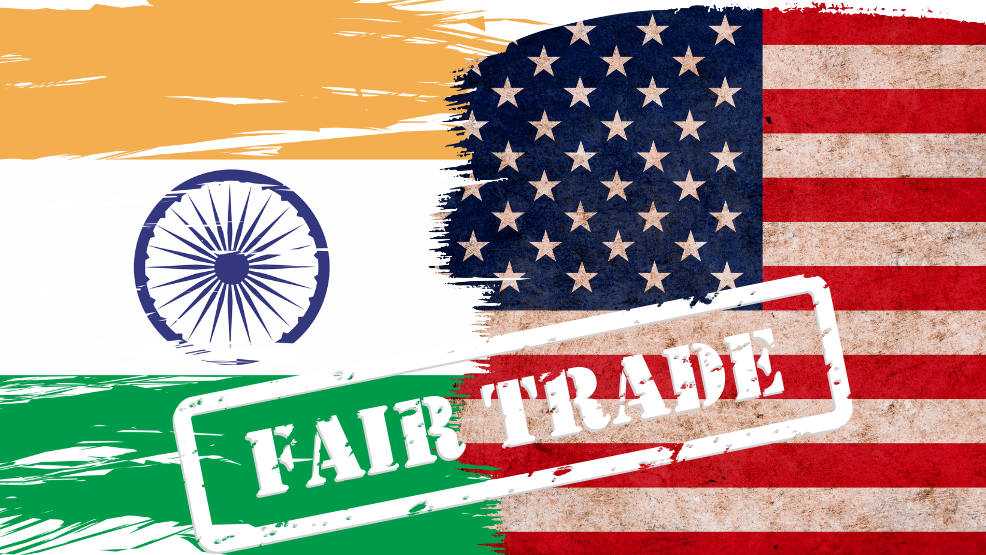JD Vance: Trump Rebalance Global Trade India Announcement
Trump Rebalance Global Trade India—these five words signal a shift in the global economic order. When JD Vance, Vice President of the United States, announced in India that President Donald Trump is working to “rebalance global trade,” it became clear this wasn’t just another policy declaration. This was a moment of transformation—one that could redefine US-India trade relations and set the tone for the world economy.
By officially finalizing the terms of reference for a new US-India trade negotiation, Vance underscored a major policy move. It’s not just about trade numbers — it’s about shifting the very framework of international commerce.
The Global Trade Landscape: Why Rebalancing Is Needed
Global trade has evolved dramatically over the last few decades. While globalization has lifted millions out of poverty, it has also led to trade imbalances, job displacement in the West, and economic dependencies that many nations are now re-evaluating.
The US trade deficit has long been a contentious issue. Goods are often imported at rates that outpace domestic production, particularly from economies that play by different rules — be it on subsidies, currency manipulation, or labor standards.
Trump’s approach, as echoed by JD Vance, is to correct these discrepancies. It’s not about protectionism, but pragmatism — reshaping trade so that it works for the people, not just for corporate balance sheets.
A Historic Turning Point in US-India Economic Relations
India and the US have always shared a dynamic, albeit cautious, trade relationship. Yet, never before has the potential for a true economic partnership looked as promising as it does today.
By aligning strategic interests, promoting democratic values, and committing to fair trade, both countries are laying the groundwork for a new era of economic cooperation — one that could redefine the Indo-Pacific trade corridor.
What JD Vance Said About Trump’s Trade Goals
Vance didn’t mince words. He highlighted the “historic nature” of this moment and emphasized that the Trump administration seeks to build “a system of global trade that is balanced, one that is open, and one that is stable and fair.”
Critics have long accused Trump of waging a trade war. However, Vance strongly rebutted this narrative, stating that the real objective is economic rebalancing — restoring equilibrium in trade relationships without engaging in economic aggression.
Defining What ‘Rebalancing Global Trade’ Really Means
So, what does it actually mean to rebalance global trade?
It means reshuffling the current deck so that trade is based on:
- Reciprocity, not one-sided advantage
- Transparency, not backroom deals
- Fairness, not exploitation
- Resilience, not over-dependence on singular markets
It also means crafting bilateral agreements that reflect mutual growth instead of zero-sum outcomes.
How Trump Rebalance Global Trade with India Could Shape the Global Economy
The finalized terms of reference represent a commitment from both nations to push forward with tangible trade outcomes. We’re talking about joint ventures in:
- Technology and AI
- Defense manufacturing
- Agricultural exports
- Digital infrastructure
- Energy partnerships
As the world fragments into competing blocs, the US-India trade axis could emerge as a cornerstone of a new economic order that values liberty, innovation, and shared prosperity.
Debunking the Trade War Criticism: What Critics Missed
Let’s set the record straight.
Critics labeled Trump’s tariffs as a trade war. But as Vance clarified, the intention wasn’t to isolate — it was to negotiate from a position of strength. The tariffs were bargaining chips in a much larger game of chess, not end goals.
This strategy has led to tangible wins: revised NAFTA (USMCA), reshaped relationships with China, and now, meaningful advances with India.
Partnership Without Uniformity: A New Trade Doctrine
“America’s partners need not look exactly like America,” said Vance. That line packs a punch.
It signals a mature doctrine — one where alignment on values and outcomes matters more than similarity in governance. The US is now open to partnering with countries that bring different strengths to the table, so long as they’re committed to fairness, freedom, and mutual benefit.
Frequently Asked Questions About Trump Rebalance Global Trade with India
Is Trump starting another trade war?
No. According to JD Vance, Trump is creating fairer frameworks for mutual growth — not seeking confrontation.
What does “rebalancing” mean in trade terms?
It refers to adjusting trade policies to ensure equity, reduce deficits, and prevent exploitation.
Why is India so important in this strategy?
India offers a vast market, geopolitical balance, and democratic alignment — key pillars of future trade.
How will this affect the American economy?
It aims to boost domestic manufacturing, create jobs, and reduce reliance on unfair trade partners.
What role does JD Vance play in this?
As VP, Vance is articulating and executing Trump’s trade diplomacy abroad — starting with India.
What happens next?
Formal trade negotiations between India and the US will commence, shaping deals for tech, manufacturing, and services.
The Road Ahead: A More Balanced, Fair, and Prosperous Global Trade Future
Rebalancing global trade isn’t a slogan. It’s a shift — bold, intentional, and strategic. With India as a key ally and JD Vance acting as a statesman on the global stage, Trump’s vision is no longer theory. It’s action in motion.
Whether you support or oppose the politics, one thing is certain: the world is watching. And the future of trade might just be getting a whole lot fairer.

Suggestions for Internal & Outbound Links
Internal Links:
Outbound Links: